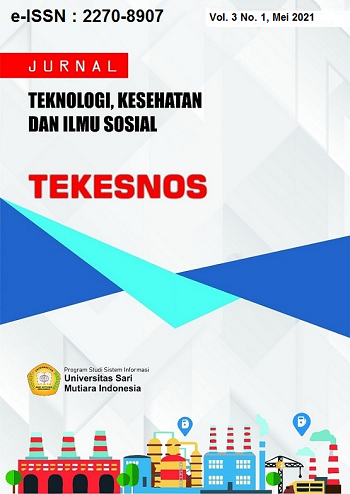PENETAPAN KADAR VITAMIN C SECARA IODIMETRI PADA TOMAT CHERRY KUNING (Solanum lycopersicum Var. Cerasiforme) YANG DIBUDIDAYAKAN SECARA HIDROPONIK
Keywords:
Vitamin C, Solanum lycopersicum Var. CerasiformeAbstract
Vitamin C is a vitamin that is necessary for a healthy body. Vitamin C is one of the water-soluble vitamins and has a strong reducing power. This reducing power of vitamin C is the reason for choosing the method of determining its levels by iodimetry. The purpose of this study was to determine the levels of vitamin C contained in Yellow Cherry Tomatoes (Solanum lycopersicum Var. Cerasiforme) which were hydroponically cultivated and those grown in soil were carried out by iodimetry.This method uses a descriptive method, namely to examine the levels of Vitamin C samples contained in Yellow Cherry Tomatoes (Solanum lycopersicum Var. Cerasiforme) which are cultivated hydroponically and planted in the ground.Based on the results of the analysis carried out by iodimetric titration, the average level of vitamin C in Yellow Cherry Tomatoes cultivated hydroponically was 29,55 ± 1,2854 mg/100 g and the average level in Yellow Cherry Tomatoes grown in soil was 25,09 ± 1,2862 mg/100 g. Based on these results, it can be concluded that the levels of vitamin C in Yellow Cherry Tomatoes that are cultivated hydroponically are higher than the levels of vitamin C grown in the soil due to different growth factors and plant nutrients.
Downloads
References
Achadi L, Endang. 2007. Gizi dan Kesehatan Masyarakat. Depok : Rajagrafindo Persada
Ahmadi, Ahmad. 2010. Ilmu pendidikan. Jakarta : Rineka Cipta.
Ali, M. (2013). Penelitian Kependidikan Prosedur & Strategi. Bandung: CV. Angkasa.
Almatsier, S (2009) Prinsip Dasar Ilmu Gizi. Jakarta : PT Gramedia Pustaka Utama.
Andarwulan, N., dan Koswara, S. (1992). Kimia Vitamin. Jakarta: Rajawali Press. Hal. 24-33.
Basset J. dan Mendham. 1994. Buku Ajar Vogel Kimia Analisis Kuantitatif Anorganik. Jakarta : Buku kedokteran EGC.
Dewi, dkk. 2013. Titrasi iodimetri. Jakarta selatan : Isntitut sains dan teknologi nasional Jakarta selatan.
Ditjen POM RI. (1979). Farmakope Indonesia. Edisi III. Jakarta: Departemen KesehatanRI. Hal. 649, 689.
Kementrian Kesehatan RI. 2018. Profil Kesehatan Indonesia 2017. Jakarta: KemenkesRI. Diakses pada tanggal 31 Januari 2019 dari http://www.depkes.go.id/resources/download/pusdatin/profil- kesehatanindonesia/Profil-Kesehatan-Indonesia-tahun-2017.pdf
Khopkar, S.M. 2003. Konsep Dasar Kimia Analitik. Jakarta : UI Press.
Mardalena, I. (2017).Dasar – Dasar Ilmu Gizi. Pustaka Baru Press. Yogyakarta. Hal 194-195
Mardalena, Ida. 2017. Dasar - dasar Ilmu Gizi Dalam Keperawatan. Yogyakarta: PustakaBaru Press.
Moehji, Sjahmien. 2001. Dasar-dasar Ilmu Gizi 1. Jakarta : Pustaka Kemang Rauf, R. (2015). Kimia Pangan. Andi. Yogyakarta. Hal 132.
Sediaoetama, A. D. (2008). Ilmu Gizi Untuk Mahasiswa dan Profesi. Jilid ke-I. Jakarta: Dian Rakyat. Hal. 105,131.
Sudarmadji, S., Haryono, B. dan Suhardi. (1989). Analisa Bahan Makanan dan Pertanian. Yogyakarta: Liberty. Hal. 165-166.
Sudjadi dan Rohman .A. (2008). Analisis Kuantitatif Obat. Yogyakarta : Gadjamadah University Press. Hal : 208-209; 215.
Sumbono. A. (2016). Biokimia Pangan Dasar. Deepublish. Yogyakarta. Hal 225 Winarno, F. G. (1989). Kimia Pangan dan Gizi. Jakarta: PT. Gramedia Pustaka Utama. Hal. 119, 131-133.
Winarti, S. (2006). Minuman Kesehatan. Trubus Agrisarana. Surabaya. Hal 64-68. Winarti, S. 2006. Minuman Kesehatan. Trubus Agrisarana: Surabaya.
Zulkarnain dkk. 2013. Pengaruh Kompos, Pupuk Kandang, dan Custom – Bio terhadap Sifat Tanah, Pertumbuhan dan Hasil Tebu (Saccharum Officinarum L.) pada Entisol di Kebun Ngrangkah – Pawon, Kediri. Indonesian Green Technology Journal. Volume 2, Nomor 1, 2013. Hal 6.













